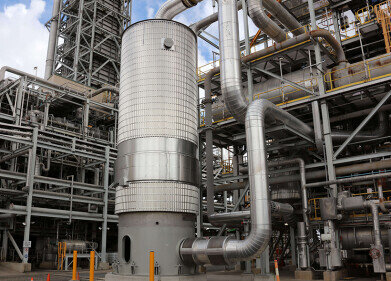Air Clean Up
Microplastic Reduction Device Wins James Dyson Award
Oct 12 2020
A team of masters students from Imperial College London and the Royal College of Art have won the UK prize of the James Dyson award for their microplastic and particulate matter reducing invention. The device fits on to the wheel of a car and uses the air flows and electrostatics generated by the momentum of the tyre to collect the tiny fragments of pollution as they are discharged by the vehicle.
Operating under the banner The Tyre Collective, the students hail from different parts of the globe and bring with them expertise in a variety of different disciplines, resulting in the ingenious invention. After bagging a £2,000 windfall from the UK competition, they will now go on to compete in the international finals, which are set to be judged next month and carry a top prize of £30,000 for the winning selection.
A wealth of debris and pollution
When it comes to the emissions created by the automotive industry, most people instinctively think of those emanating from a vehicle’s tailpipe. However, it might come as a surprise that around half of the particulate matter (PM) generated from road transport is created from tyre wear, since each time a vehicle brakes, accelerates or turns a corner, the surface of the tyre is degraded and tiny particles enter the air. Through this process, an estimated 500,000 tonnes of tyre particles are deposited on European roads each and every year, amounting to no small amount of air pollution.
It’s not just PM created by tyre friction, either. These tiny particles are a chief contributing factor to highly dangerous microplastic pollution, which can be swept into rivers and streams by excessive rainfall, eventually ending up in our seas and oceans. In fact, tyre particles are the second biggest microplastic pollutant in the ocean, after that created by single-use plastic items.
“It’s common knowledge that tyres wear down, but nobody seems to think about where it goes, and we were really shocked to discover that tyre particles are the second-largest microplastic pollutant in our oceans,” explained Hugo Richardson, one of the team. “At the Tyre Collective, we incorporate sustainable and circular values into product design to capture tyre wear at the source.”
An ingenious solution
The scientific community has been struggling to find a suitable solution to the ever-growing problem of plastic pollution, with one avenue being pursed the combination of artificial intelligence and forensic science. However, The Tyre Collective’s invention goes one better by removing the contamination at its source, before it even has a chance to pollute the Earth.
It works by harbouring the electrostatic energy and air flows generated by the spinning wheel of a car to funnel the offending particles directly into a device fitted to the wheelrim. In controlled tests, the prototype was capable of picking up 60% of all microplastic particles emitted, signifying a huge step forward for the industry.
After being captured, the tiny particles can be recycled into any number of useful commodities. The group carry business cards emblazoned with ink created from the particles, while they can also be used in 3D printing, soundproofing materials or even to manufacture new tyres.
Events
May 05 2024 Seville, Spain
May 13 2024 Munich, Germany
May 23 2024 Beijing, China
May 23 2024 Beijing, China
Jun 10 2024 Algiers, Algeria
.jpg)













